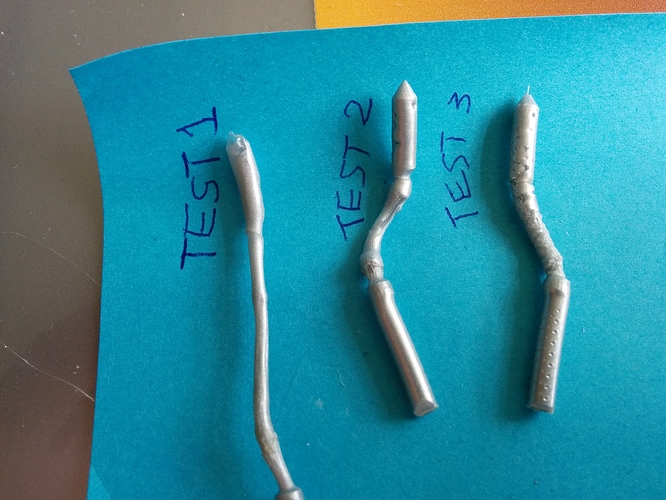Hi everyone,
Last Friday, I asked you some suggestions about how to improve the quality of a Ultimakers 2+ print… I’ve some good and bad updates about it!
Let’s start with the good news! The project it’s finished and the result it’s pretty cool. Here is a picture of the final lamp:
The bad news is that I didn’t realise what was the cause of the issue 1. I just reprinted the lamp and, the second time, everything was fine.
"Things will go wrong in any given situation if you give them a chance", Murphy said and, apparently, he was right.
I began a new project with the Ultimaker 2+ but I incurred in a new problem, even before starting to print. When I commenced the new print, I found a “beautiful surprise”. I enclose a picture of what turned out to be the first layer:
Immediately, I thought that there was a problem or with the nozzle or with the filament. So, I cleaned the nozzle and tried again… Same result! I checked the filament and the filament gear: everything was working.
Quite surprised by the situation, I decided to try the “Atomic Test 7” in order to understand what could have been the cause of the issue. The result was quite strange:
As you can see, the nozzle it’s open. The filament, also, it’s pushed in the correct way. Something it’s going wrong inside the hotend.
tried all the possible temperature within 190° and 220° but the result was the same. So, probably, the issue isn’t caused by a wrong temperature. I checked the hotend and, apparently, there is nothing inside that can block the filament.
Honestly, I have no idea of what can be the cause of the problem: I’d say that is something inside the hotend, according to the result of the tests that I tried but I’m not really sure. Do you have any suggestion about what I can do to solve the problem or to understand its cause?
Cheers,
Federico
created
Jul '16last reply
Jul '16- 30
replies
- 6.3k
views
- 15
users
- 31
likes
- 5
links



